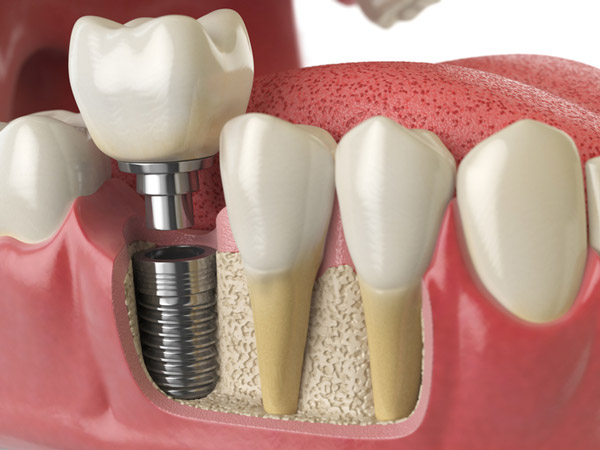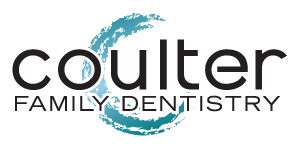Bone Grafts Procedure Spokane For many patients, bone grafting is the first step on the road to receiving their new dental implants. Coulter Family Dentistry performs bone grafts to ensure that every patient who can benefit from dental implants is an ideal candidate. For many patients, bone grafting is the first step on the road to receiving their new dental implants. Coulter Family Dentistry performs bone grafts to ensure that every patient who can benefit from dental implants is an ideal candidate.There are several applications for bone grafting in the medical field. In dentistry, the bone graft is a good way for patients to start restoring their dental health. The procedure may sound quite intense, but it is truly a relatively minor dental procedure. Bone is often mistaken as being a firm and solid part of the body. In reality, it is much more of a malleable material than many believe. Why Do I Have Bone Loss in the Jaw?Bone loss is commonly a result of periodontal (gum) disease where the gums, bone, and tooth ligaments are destroyed by an infection caused by bacteria. It is also caused by tooth loss. If a tooth is extracted or it is knocked out by accident, the bone socket around the tooth begins to lose bone immediately, with up to 25% being lost in the first year after removal. Why We Recommend Bone GraftingWe recommend bone grafting for many patients interested in dental implants, or who are getting teeth extracted but have yet to decide on a particular replacement option. We prefer dental implants over alternatives like dentures or dental bridges because implants support your health over the long-term, while the alternatives can actually negatively impact it. Unlike dentures and bridges, dental implants are actually inserted beneath the gums, in the jaw itself. This means there needs to be plenty of bone there. When resorption occurs, placing implants becomes much more difficult and can even be dangerous. Bone grafting can both restore bone to enable the placement of implants and can help stop resorption from occurring in the first place if the graft is done as part of an extraction procedure. Bone Grafting Can Also Be Used to Help with TMJBone grafts can be used to repair issues most commonly found in the temporomandibular joint which is better known as the TMJ. If the patient suffers from conditions related to the TMJ they are said to suffer from temporomandibular disorders which is most commonly referred to as TMD. These issues may arise due to the patient suffering trauma to either the face, mouth, or jaw. The symptoms of TMD can manifest themselves in issues where patients have a difficult time chewing or speaking. It is also offered as a solution for those patients who are unable to completely close or open their mouths and report severe pain or discomfort. A bone graft applied directly to the TMJ can, in most cases, minimize the symptoms. What Materials Do We Use for a Bone Graft?There are four different sources that are commonly used for bone grafts. In most cases, we prefer what is called an autograft. An autograft is when the bone is harvested from your own body, most commonly from the pelvis or hipbone. Autografts have the best biocompatibility, meaning the new bone will grow the fastest. An allograft also uses human bone, but bone taken from someone else. They are used less frequently and the material is stored in what is called a tissue bank until it is needed for the procedure. Similarly, xenografts harvest bone from animals, often cows. One of the safest types of bone grafting is an alloplast. With an alloplast, bone is grown in a laboratory. Because it is synthetic, there is absolutely no risk of disease. Allografts, xenografts, and alloplasts are all widely available, but slower and less effective than an autograft. Undergoing Bone GraftingYou will be locally anesthetized prior to your bone grafting. If the graft is part of a tooth removal then no further surgery will likely be necessary to place the graft material. If the graft is an independent procedure, then we will need to expose the site where the bone is being added by carefully drilling a small hole. The graft material will be inserted, and the hole will be closed up. It will then take several months for your body to replace the material with new bone. What Is the Recovery Like After a Bone Graft?There may be some discomfort felt after your bone grafting procedure Spokane, but it can be managed with medications recommended by our dentist. Ice packs applied to the exterior of your cheek can also help to control the swelling. Swelling and bruising will reach their peak after about three days, but if you apply regular ice packs to your face in the first 48 hours you can reduce the swelling substantially, which leads to a quicker recovery. Be sure that you follow the aftercare instructions you are provided when you leave our office after your bone graft procedure. You should sleep with your head elevated for a few nights after your procedure, to ensure your comfort. Avoid strenuous activity for several days and adjust your diet so you are not consuming food that you have to chew. As your mouth begins to heal you can reintroduce solid foods. Keep the mouth as clean as you can, avoiding the wound area until the stitches are out. You will feel much better after about a week, but it may be up to six weeks before all of the swelling and bruising has completely gone away. Bone Grafting Spokane Valley WAPatients who are suffering from bone loss or issues with their temporomandibular joint or those who have been curious about having a bone graft applied can find out the available options by contacting us at Coulter Family Dentistry. Bone grafting can be a highly effective treatment for patients looking to receive dental implants. To discuss how Coulter Family Dentistry can help you with a bone grafting treatment, call us at (509) 209-8747 to schedule an appointment! |
 PhoneHoursMon: 6:30am - 4:00pm Tue - Thu: 6:30am - 3:30pm Friday, Saturday, and Sunday Closed |